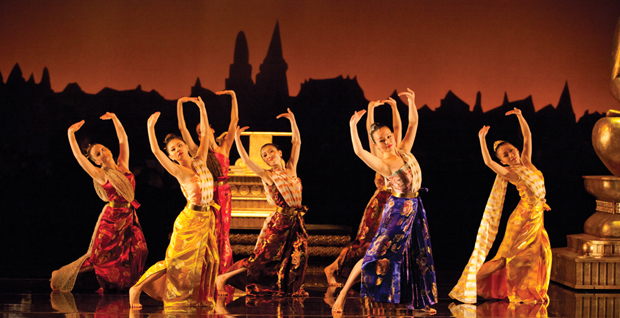The King and I – Showing @ Festival Theatre, Edinburgh until Sat 7 Jan 2012
Rodgers and Hammerstein’s musical has long since been a text for discussion. It features opposites which stir controversy and create debate from notions of monarchy vs. democracy, men vs. women and East vs. West. So with the well-known production of schoolteacher Anna’s trip to Siam to educate the King’s royal children, a sense of grandeur and scale emerges which goes unrivalled in typical, big-budget musicals.
How, then, does one prepare for such a significant role? Ramon Tikaram, who plays the King, explains “because rehearsals were only two and a half weeks, there wasn’t much time to be precious about the role. It was about finding a stature for the guy, trying to discover how intractable a human being he is, how child like he is; so one of the first moves was to find his voice”. Tikaram explains the complex nature at the root of the King’s behaviour: “it’s his curiosity about the West which is the key to it all rather than being dismissive about new ideas; it was about finding ways to make the role attractive to an audience”.
An interesting feature of the show is how these complex ideas, intricately wrapped around each other, can often be reduced and stripped back to reveal a much more straightforward set of theories. Tikaram explains how the Oriental outlook towards the East has dulled over the last few decades: “there’s been a huge power shift, economically, and the dissemination of information means we know a lot more about the East, and since the 60s the West has been courting eastern ideologies”. Yet it’s interesting that Tikaram says how “that is almost quaint in the story, that form of interest, that form of curiosity”. It means that two, fairly absolute cases can be made: that this dulling and fading of tension between East and West reflects a more reverential and at times academic understanding of different cultures, or perhaps simply dilutes the intolerance with which the West still perceives the East.
Yet what saves the musical from falling into deep, controversial territory is its focus on human relationships. Tikaram would “like to think when all that washes away, you’re left with the possibility of a romantic relationship between two people. When you first meet them [Anna and the King] their views and instincts are so polarised but somehow they find a way of communicating with each other which is quite romantic. I’m always surprised when we get to that point in the story – it is so beautiful – and that is what Rodgers and Hammerstein are so good at: building those relationships”.
And really, this building of relationships represents a formula fused into the show; there has to be enough playful excitement and intrigue between Anna and the King for there to be a pay-off at the end. So in many ways, the production has to obey certain structural features, and Tikaram describes the text as “quite prescriptive. Because I saw it a long time ago I haven’t used Brynner as my own blueprint but there are certain ways of doing things that you almost have to stick to”.
So as the 60th anniversary year of the original musical draws to a close (and the 150 year anniversary of Anna Leonowens’ original trip to Siam approaches), it’s still surprising that the ideas introduced by Rodgers and Hammerstein resonate with today’s audience. Whether this will become a text with concepts to lament in decades to come as relationships between East and West progress will be interesting to see, but for the time being, it remains both a potent reflection and effective parody of that recognised culture clash experiment.

